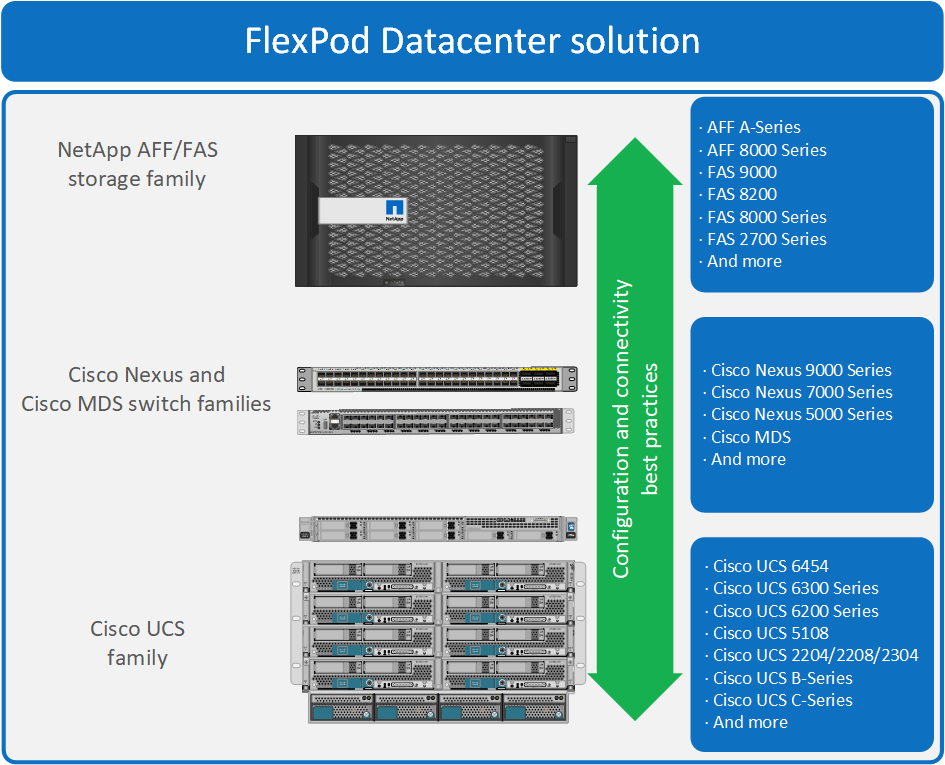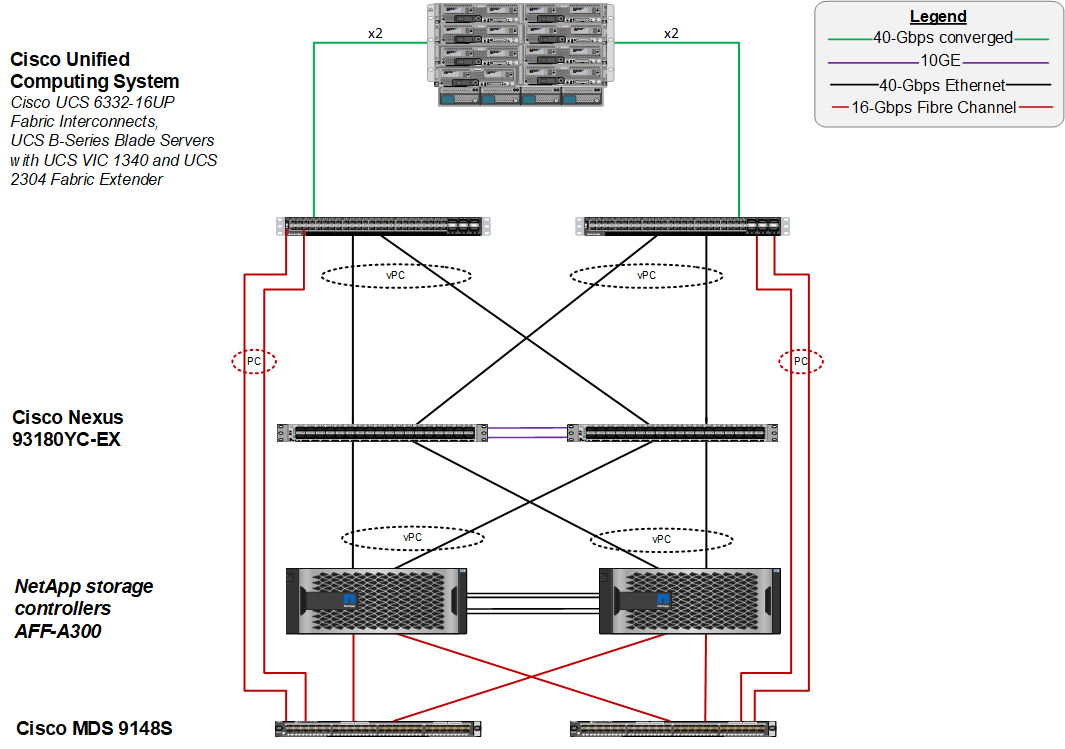FlexPod overview and architecture
 Suggest changes
Suggest changes


FlexPod overview
FlexPod is a defined set of hardware and software that forms an integrated foundation for both virtualized and nonvirtualized solutions. FlexPod includes NetApp AFF storage, Cisco Nexus networking, Cisco MDS storage networking, the Cisco Unified Computing System (Cisco UCS), and VMware vSphere software in a single package. The design is flexible enough that the networking, computing, and storage can fit into one data center rack, or it can be deployed according to a customer's data center design. Port density allows the networking components to accommodate multiple configurations.
One benefit of the FlexPod architecture is the ability to customize, or flex, the environment to suit a customer's requirements. A FlexPod unit can easily be scaled as requirements and demand change. A unit can be scaled both up (adding resources to a FlexPod unit) and out (adding more FlexPod units). The FlexPod reference architecture highlights the resiliency, cost benefit, and ease of deployment of a Fibre Channel and IP-based storage solution. A storage system that is capable of serving multiple protocols across a single interface gives customers a choice and protects their investment because it is truly a wire-once architecture. The following figure shows many of the hardware components of FlexPod.

FlexPod architecture
The following figure shows the components of a VMware vSphere and FlexPod solution and the network connections needed for Cisco UCS 6454 fabric interconnects. This design has the following components:
-
Port-channeled 40Gb Ethernet connections between the Cisco UCS 5108 blade chassis and the Cisco UCS fabric interconnects
-
40Gb Ethernet connections between the Cisco UCS fabric interconnect and the Cisco Nexus 9000
-
40Gb Ethernet connections between the Cisco Nesxus 9000 and the NetApp AFF A300 storage array
These infrastructure options expanded with the introduction of Cisco MDS switches sitting between the Cisco UCS fabric interconnect and the NetApp AFF A300. This configuration provides FC-booted hosts with 16Gb FC block-level access to shared storage. The reference architecture reinforces the wire-once strategy, because, as additional storage is added to the architecture, no recabling is required from the hosts to the Cisco UCS fabric interconnect.



